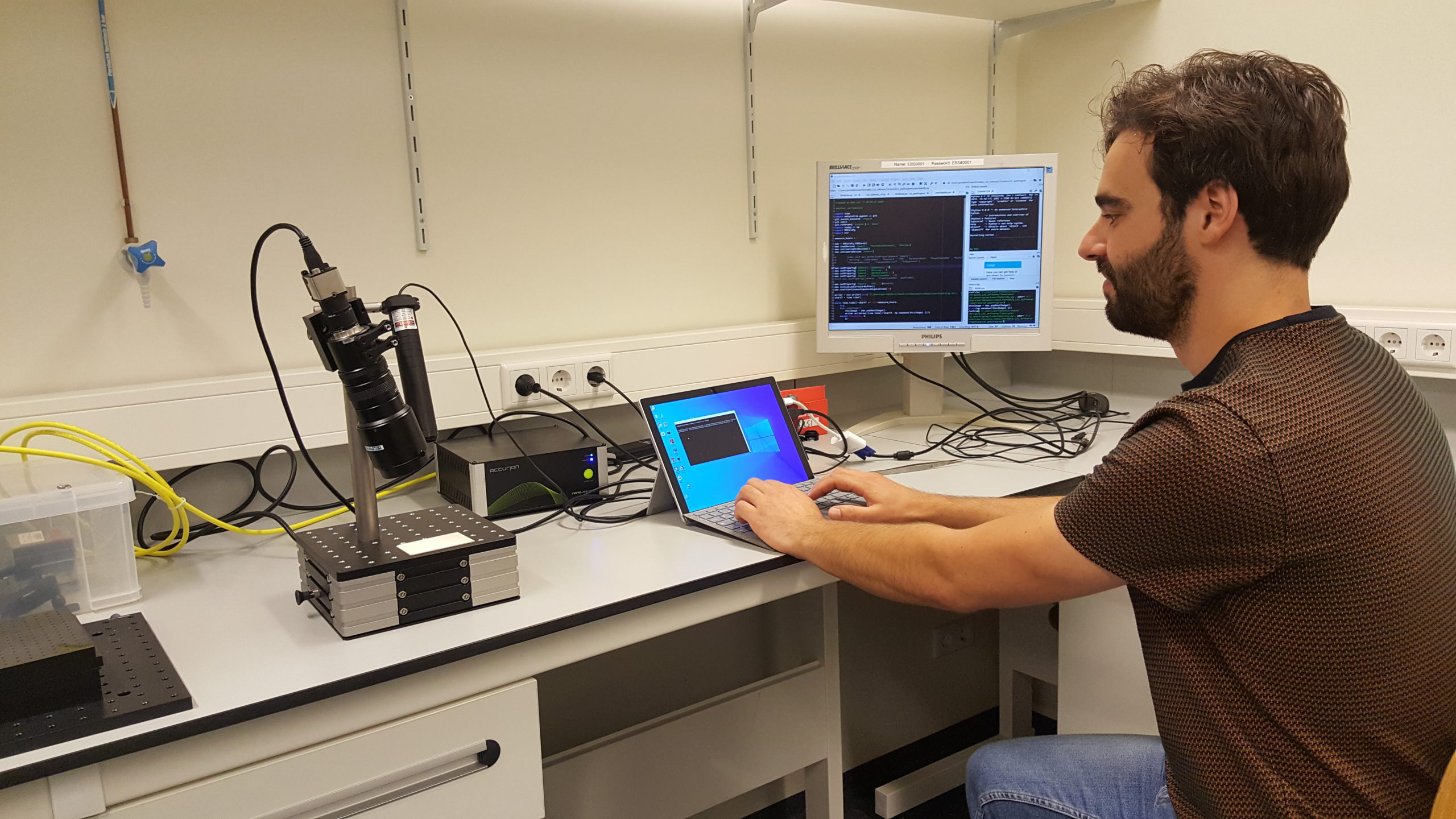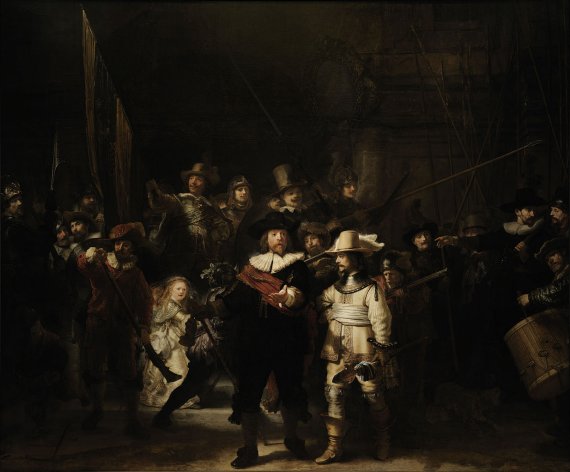The technique could be used in restoring, for example, The Night Watch. Photo: Wikimedia Commons. Public domain.
Buijs published the findings of his study in Nature Scientific Reports. ‘It’s no Rembrandt’, says Buijs, PhD candidate at Physical Chemistry and Soft Matter. In his hand, he holds a rectangular canvas painted entirely white. The paint used was made similarly to the paint used in Rembrandt’s era. Using this sample painting, Buijs studies the effect of solvents that are used to remove dirt and varnish from paintings before their restoration. These solvents may have undesired effects on the layers of paint underneath. The solvents cause the pigment molecules in the paint to move ever so slightly, which can cause -among other issues- microscopic tears.
Predicting damage
Buijs built a device that uses Fourier Transform Laser Speckle Imaging or FT-LSI. This device uses a laser to measure minute movements in the pigment molecules in the paint, something that was hitherto never done. Using the apparatus, Buijs can determine precisely how deep the solvents permeate the paint, and how quickly they evaporate. Thus, he can predict when the paint will be damaged during the cleaning.
Building the device wasn’t all that difficult, Buijs states. ‘But, I had to write the software that can rapidly show the movement of the molecules. In the beginning, this took a day, while we want to be able to monitor the effects in real-time.’ Getting that fixed took a year.

PhD candidate Jesse Buijs in the lab
Best cleaning technique
In addition to the effect of solvents, Buijs also studied what the best cleaning technique was. ‘We saw that cleaning with a kind of microfibre cloth worked best. This confirms what the restorers thought, but did not know for sure.’ Moreover, Buijs and his colleagues will see if the machine can also be used for the restoration of other art pieces made of paper or metal.
A second version of the machine is now set up in the Rijksmuseum’s studio building, which is intended for use in studying the paintings in the museum, perhaps even The Night Watch. ‘That would be awesome. The Night Watch is up for restoration, is it not? I believe they are currently testing how they can remove the varnish, so we cannot rule out that we may be able to contribute.’
Read the entire publication here
ALSO READ
Coming soon: self-cleaning windscreens and solar panels
Physical chemist Joris Sprakel is always exploring new territory: ‘I can’t stand monotony’
Paint that never fades

